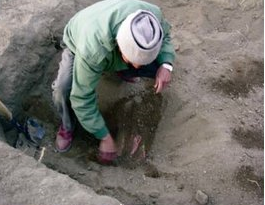
Requirment of efficient root cellar for vegetable storage in the cold arid region of Ladakh during winters
Published on:
Traditional root cellars face several limitations. They are often small and have limited storage capacity. Due to their size, conventional cellars cannot accommodate all the surplus root vegetables. Several cellars need to be dug—one for each type of root vegetable. Additionally, each year requires a new excavation to prepare a new root cellar. The soil covering these cellars freezes during winters, making digging in winter a tedious task. Once dug, all the root vegetables need to be removed from the cellar to get rid from digging of frozen soil.
